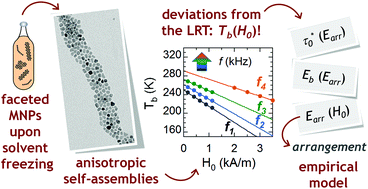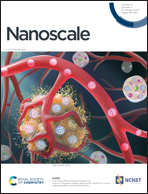Anisotropic self-assemblies of magnetic nanoparticles: experimental evidence of low-field deviation from the linear response theory and empirical model†
Abstract
The heating ability upon application of an alternating magnetic field of a system of monodisperse and non-interacting superparamagnetic nanoparticles is described by Rosensweig's model within the linear response limits. But in real applications, nanoparticle systems are rarely monodisperse or non-interacting, and predicting their heating ability is challenging, since it requires considering single-particle, inter-particle and collective effects. Herein we give experimental evidence of a collective effect that invalidates the linear response limits in self-assembled anisotropic arrangements. This effect allows tuning Néel relaxation times and, in turn, blocking temperatures, by just varying the alternating magnetic field amplitude. The analysis of the source magnetic and magnetothermal data leads to the development of an empirical model describing the modified Néel relaxation times in terms of characteristic parameters, whose physical interpretation is discussed. As a result, the dependency of Néel relaxation time on the magnetic field amplitude is assigned to a strong interaction energy contribution created locally by the ordered anisotropic assemblies. The reduction of this energy upon application of higher magnetic fields is related to the loss of preferred orientation of the magnetic moment of nanoparticles within assemblies. Remarkably, this energy contribution does not depend on particle volume distribution, so it does not contribute to widening of the energy barrier distribution of the assemblies, avoiding this detrimental effect of magnetic interactions, and contributing to an excellent heating ability. This work thus provides an analytical framework to analyze or predict the magnetic behavior and heating ability of superparamagnetic nanoparticles displaying collective effects.



 Please wait while we load your content...
Please wait while we load your content...